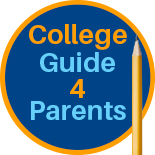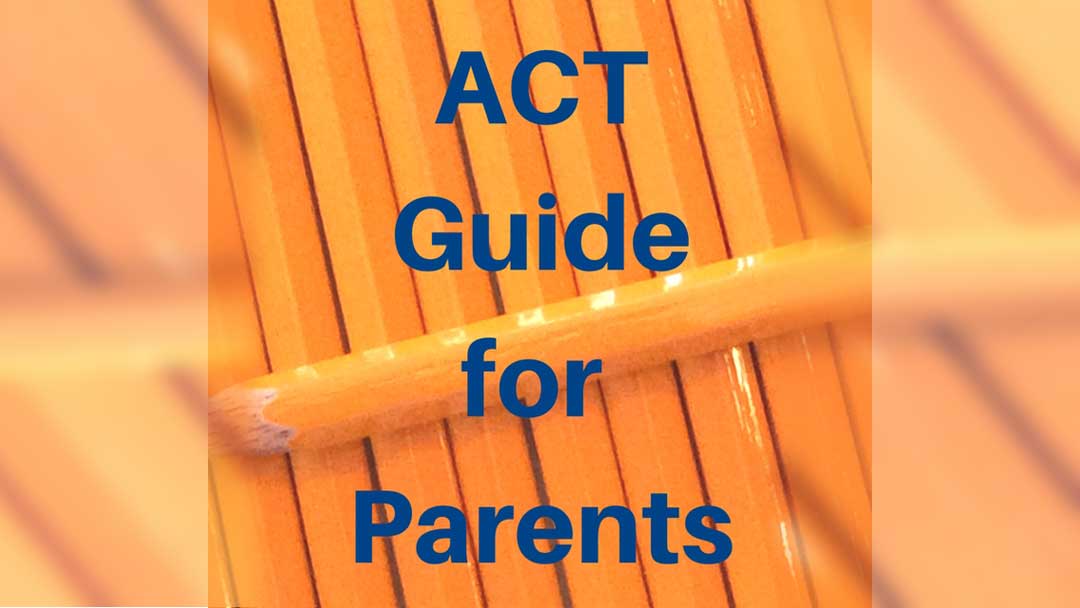As a parent, the ACT may seem very enigmatic.
You may know that it is administered on a few Saturdays a year at local high schools or university campuses and that the maximum one can get on the test is 36.
This ACT guide focuses on how to register, how to get and interpret the results, what is on the test, and what goes on during the test.
1. Where does my student register for the ACT?
Everything takes place on the act.orgwebsite. Your student will need to create an account. The first time around, he should plan on spending a minimum of 10 minutes registering. ACT recommends 40 minutes because there is a long set of questions aimed at helping your student identify careers that may interest him. Students are also asked questions about the classes they have already taken or that they will take in the future, where they want to take the test, and to which colleges the scores should be sent.
Once the fee has been paid, the student is registered for the test. One last step remains: uploading a picture and printing the admission ticket. This does not have to be done immediately, but your student must be sure to do it before the test since the admission ticket and a photo ID are required to get into the test center.
The ACT test includes also a writing section. This is optional. When registering one gets to choose between the ACT No-Writing which cost $50.50 and the ACT with Writing which costs $67.00 (2018-2019 fees).
As part of the test registration, students can send the score they get on that test to four colleges for free. Sending it to any other school costs an additional $13.00 per college.
2. Can my student register after the deadline?
An additional $30.00 is added if one registers after the deadline. It is not possible to register less than about 20 days before the actual test unless your student wants to use the standby option.
Up until about 8 days prior to the test date, students can register for taking the test in standby. The cost is $53.00. It allows students to take the test if, once at the testing center, there are extra testing booklets, enough seating, and enough staff to supervise the test for the additional participants. It is first come first served. Rules are slightly complicated. If your student needs to take advantage of this option, please make sure she reads all the rules at act.org.
If your student is testing in December, April or June, he can pay an extra $20.00 to get a copy of the test booklet, his answers, and the correct answers. The best way for your student to improve his score is to see where he made mistakes. Check act.orgfor all current fees.
3. When and where is the ACT test administered?
The ACT is given on 6 Saturdays a year. Check the 2018-2019 dates.
The test is offered in local high schools and colleges. Depending on where you live, your student may have several nearby test centers to choose from or if you live in a remote area, she may have to travel a long distance to the nearest test center. During the registration process, she will be presented with a list of the nearby test centers. If your student registers early, she will have a larger selection than if she waits until the last minute to register, as each test center has a limited number of seats available.
All test centers administer the test on the same day. Additional dates are offered for those who cannot take the test on Saturdays for religious reasons.
4. What materials are on the test?
The following information is extracted from “The Real ACT Prep Guide” book, the only publication by the ACT company. It is the only book that offers official ACT practice tests. It also has a 120-pages presentation of each of the section of the test including examples of questions.
The ACT has 4 parts: English, Mathematics, Reading, and Science. The student has to take  all four to get a score. The student can also opt, for a higher cost, to take the Writing test. Many universities do not require it.
all four to get a score. The student can also opt, for a higher cost, to take the Writing test. Many universities do not require it.
The English test consists of 75 questions, 40 on usage and mechanics and 35 on rhetorical skills such as writing strategy, organization, and style.
There are 60 questions in the Mathematics test: 14 on pre-algebra, 10 on elementary algebra, 9 on intermediate algebra, 9 on coordinate geometry, 14 on plane geometry and 4 on trigonometry.
The Reading test consists of 4 passages to read in the following fields: prose fiction, humanities, social studies, and natural sciences. The students have to answer 10 questions per passage. The biggest difficulty of this test is time. The 40 questions must be answered in 35 minutes.
The Science test is not as scary as it sounds. It does not involve any studying. Rather it is very similar to the Reading test. It consists of 40 questions on 7 passages presenting some scientific experiments, including diagrams and tables. It tests the student’s ability to interpret and analyze scientific information. The studies presented can relate to biology, chemistry, earth/space science or physics. This test also lasts 35 minutes.
The Writing test is an essay to be written in 30 minutes. The writing prompt presents an issue and two points of views. The student is to write about her chosen position.
The four sections of the ACT test are addressed only briefly in this ACT guide for parents. It is CollegeGuide4Parents’ intention to cover in detail each section of the test. It will provide you with a good understanding of the test as well as provide tools to help your child prepare successfully. The information presented will also help you understand what is required for your child to prepare well for each section of the test. This will also allow you to guide and encourage your child in his studying and practicing. Currently, fifteen posts cover the Math test. More will be added to present the English, Reading and Science sections.
5. What goes on during the test?
The ACT No-Writing test lasts about 4 hours including setup and a break. At 8:00 the doors open and the students are checked in. Students have to bring the admission ticket they printed at registration and a picture ID. Each student is assigned a desk and given a test booklet that can only be open when the test supervisor tells the students to do so. The test is taken in a sequence: English, Mathematics, Reading, and Science.
Students can only work on the English section in the allotted time. Anyone turning to any other part of the booklet before being told to do so will not be allowed to complete the test. The English test consists of 75 questions and lasts 45 minutes. The students must wait until the supervisor instructs them to start the Mathematics section. The Math section consists of 60 questions in 60 minutes. Then there is a break. Participants should plan on bringing a snack to eat during that time. Then the Reading test starts: 40 questions in 35 minutes. Students should wait until asked to move to the Science section. The Science test has 40 questions to be answered in 35 minutes. Then those not taking the Writing portion of the test leave. The others get a break. The test consists of the writing of an essay and lasts 30 minutes.
6. When and where are the results made available?
Scores for students who have taken the ACT No-Writing are made available within 3 to 4 weeks on their account at act.org. Correction of the essays must be done by a person, so it takes a few more weeks to get the score.
7. What is a good score?
The maximum score one can get on the ACT individual sections is 36. The overall score (calculated using the English, Math, Reading and Science scores) is called the composite score. A perfect composite score is also 36.
Some colleges compute a super score, which is obtained by using the best score the student ever got in each subject.
Universities consider ACT scores when admitting students as well as when awarding merit-based scholarships. A score in the twenties is often enough to get into public colleges but a score of 32 or above may be required to be considered for a specialized degree or full-ride scholarships.
8. Can my student take the ACT as often as she wants?
The ACT test cannot be taken more than 12 times. This can be an issue if a student starts taking the test as early as the 9th grade. Doing so is a good idea but one should plan on doing most of the testing in 11th and 12th grade.
9. What does my student need to bring for the test?
He will need
- Admission ticket
- Photo ID
- Sharpened no.2 pencils with good erasers
- A calculator. Check here for allowed calculators.
- A watch with alarm function off
- A snack
Check “Bring this, not that”and “Acceptable forms of identification”on act.orgfor the ACT official recommendations.
Using the information presented in this ACT guide, you will be able to help your child register and leave for the test with everything he will need. On this blog you will also learn more about the individual sections of the ACT test and how to help him better study for the test. See the bottom of this blog for related posts.
Resources Mentioned in this ACT Guide:
act.org – Official ACT website
2018-2019 test dates and testing fees
Bring this, not that – what to bring at the ACT test
Acceptable forms of identification – be sure your child brings an ID
Related Posts:
7 Quizzes to Improve on the ACT Math Test
ACT Math – Elementary Algebra Quiz
ACT Math – Elementary Algebra Review
ACT Math – Coordinate Geometry Quiz
ACT Math – Coordinate Geometry Review




